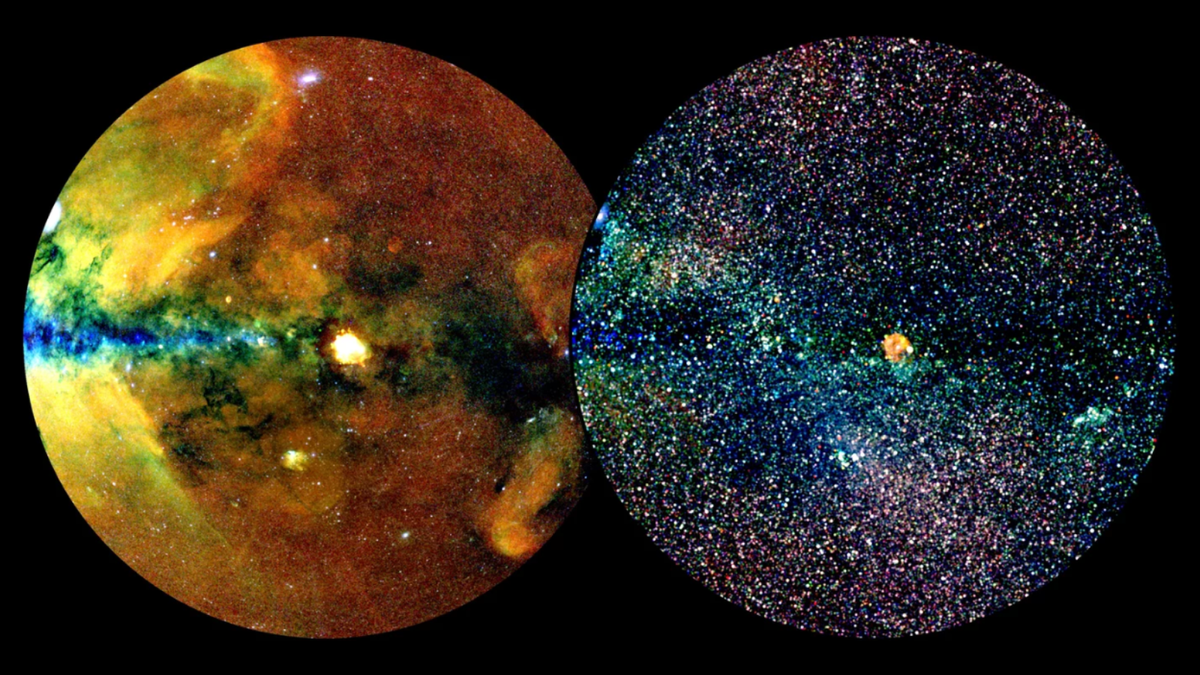The first data released to the public from the eROSITA sky survey includes an X-ray image of half the sky above Earth, including nearly a million high-energy cosmic sources, including more than 700,000 supermassive black holes.
This catalogue, called the “eROSITA All-Sky Survey Catalog (eRASS1),” was published on Thursday (February 1). It constitutes the largest catalog ever of the most powerful energy sources in the universe, such as exploding massive stars and active galactic nuclei powered by black holes that shine brightly in X-rays. The release also details the largest known structures in the universe, the threads of the cosmic web of hot gas that connect galaxies in clusters.
The results show that in just half a year of operations that began after launch on July 13, 2019, Aerosita was able to detect more high-energy X-ray sources than had been discovered in six decades of scanning the sky.
eRASS1 is a major milestone in nearly 60 years of X-ray astronomy, and could help answer some of the biggest questions in cosmology: How did the universe evolve, and why is the fabric of space expanding at an accelerating rate?
Related: Mysterious dark energy spreads evenly across the universe

The eRASS1 data is accompanied by approximately 50 published scientific papers across a range of topics, adding to the 200 existing papers already written using data from the eROSITA telescope.
eROSITA's main goal is to use clusters of galaxies to observe how dark energy accelerates the expansion of the universe; However, these 250 papers show how far the tool and its data have exceeded this goal.
This research includes the discovery of more than 1,000 galaxy superclusters, the detection of two black holes that erupt almost periodically, and determining the effect of star X-rays on the water retention and atmosphere of the planets around which they orbit.
“The scientific scope and impact of the survey is so enormous, it is difficult to describe in a few words,” Mara Salvato, spokeswoman for the German eROSITA consortium, said in a statement. “But the papers published by the team will speak for themselves.”
eROSITA lets the numbers do the talking
The eRASS1 data consists of eROSITA telescope observations made from December 12, 2019 to June 11, 2020. It crossed half the sky above Earth. During this period, the space telescope detected about 170 million individual particles of X-ray light, or “photons.”
Processing these photons revealed 900,000 X-ray sources, 700,000 of which feed the supermassive black holes that power quasars in the cores of active galactic nuclei, regions in the centers of galaxies so bright that they can outshine the combined light of every star in those same galaxies. .
Also shown in eRASS1 are 180,000 X-ray emitting stars in the Milky Way, 12,000 galaxy clusters and even exotic classes of X-ray sources such as binary stars, supernova remnants, pulsars and other similar objects.
“These are amazing numbers for X-ray astronomy,” said Andrea Merloni, principal investigator at eROSITA and first author of the eROSITA catalog paper. He said in a statement. “We have discovered more sources in 6 months than the two large mainline missions XMM-Newton and Chandra have in their nearly 25 years of work.”
The data release is also impressive in terms of the spread of observations, with the skies above Earth imaged using multiple X-ray energies. In addition, eROSITA is incredibly accurate, with the first data release also identifying the locations in the sky from which individual photons are received, as well as the arrival times and energies of these photons.
Along with the release, the eROSITA consortium has also made available the software needed to analyze data from the X-ray telescope as well as catalogs beyond just X-ray data.
“We have made a huge effort to release high-quality data and software,” said Iriam Ramos Ceja, eROSITA Operations Team Leader. “We hope this will expand the base of scientists around the world working with high-energy data and help push the boundaries of X-ray astronomy.”

“Typical beer advocate. Future teen idol. Unapologetic tv practitioner. Music trailblazer.”







More Stories
Boeing May Not Be Able to Operate Starliner Before Space Station Is Destroyed
How did black holes get so big and so fast? The answer lies in the darkness
UNC student to become youngest woman to cross space on Blue Origin